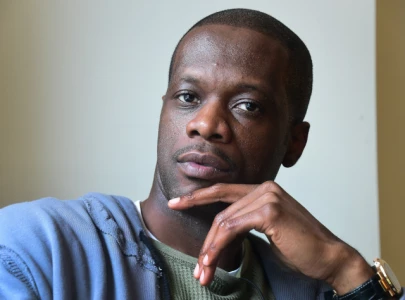
TV channels actually let their not-so-literate newscasters use sarcastic sentences, as they looked back at President Zardari’s decision to approach the UN to get at the truth, and then, not being satisfied with it, descend into a curious silence before getting a joint investigation team (JIT) to move afresh on the case. During this process, opponents like Mumtaz Bhutto have been hinting broadly that Ms Bhutto was killed by those whom she was close to, making it quite clear that he, Mumtaz, held her husband responsible for her death (without providing any proof whatsoever). Unfortunately, a split within the PPP, headed by Naheed Khan and Safdar Abbasi, swelled the chorus, asking for ‘full investigation’ into the conduct of ‘all present’ at the place of the murder.
The UN inquiry was perhaps the wrong thing to do because the UN could never have fingered the killers. Yet there were things in its report that constituted good pointers. Like the Scotland Yard inquiry, it too reposed credence in the nexus between the Pakistani establishment and the terrorists in Fata. It took seriously the tape that had Tehreek-i-Taliban (TTP) chief Baitullah Mehsud discussing his assassination plot to get rid of Ms Bhutto for al Qaeda, whose spokesman had already warned that she was to be eliminated since she was deemed to be an ‘American asset’. You have to be from outside Pakistan to believe that Baitullah was no saint when he swore that “Taliban do not kill women”. Pakistanis simply refuse to see that a phone call from Islamabad can get anyone killed at the hands of the Taliban, even when it happens again and again in front of them.
The JIT, in November of this year, issued its 48-page inquiry report which said that the TTP had carried out the assassination. It stayed clear of the army personnel and other important members of the establishment but did say that the military “did not allow the team to get statements” from the military hierarchy. But it did something else which would scare off any TV channel know-all anchor: it indicted Baitullah Mehsud, and accused Ibadur Rehman, Abdullah and Faiz Muhammad (former students of Madrassa Haqqania, Akora Khattak in Nowshera), Ikramullah (suicide bomber), Aitzaz Shah, Sher Zaman, Hasnain Gul, Muhammad Rafaqat, Rasheed Ahmed, Nasrullah and Nadir of “carrying out, facilitating and financing the attack”.
Picking up cues from the UN report, the JIT also charged Syed Saud Aziz, a former Rawalpindi police chief, and Khurram Shahzad, a former superintendent of police, with criminal negligence of duty and “hosing down the crime scene”. The electronic media revisited the scene on the third anniversary of the assassination and found eyewitnesses who gave accounts, adding more details to the dossier. The local PPP leader who was in charge of managing the Liaquat Bagh meeting where Ms Bhutto spoke stated that the armoured vehicle which carried her away from the scene had one of its rear tyres flattened and was blocked by a crowd that did not belong to the PPP but could have been organised by persons from within the establishment. This crowd blocked the vehicle and allowed a man to fire at Benazir and a suicide bomber to emerge from Liaquat Bagh to blow himself up near the first assassin. Names have been named and they belong in the list presented to Pervez Musharraf by Ms Bhutto in a letter when he was in power. In this letter, she said that she had been told that the establishment would try to get rid of her. And this establishment contained elements who exercised policy control even after retirement. The JIT report demands action. Will the government be allowed to start action against the well-known “nursery” of jihad named in the report? Or will the trail fade like that of Pakistan’s earlier assassinations?
Published in The Express Tribune, December 29th, 2010.












COMMENTS (3)
Comments are moderated and generally will be posted if they are on-topic and not abusive.
For more information, please see our Comments FAQ